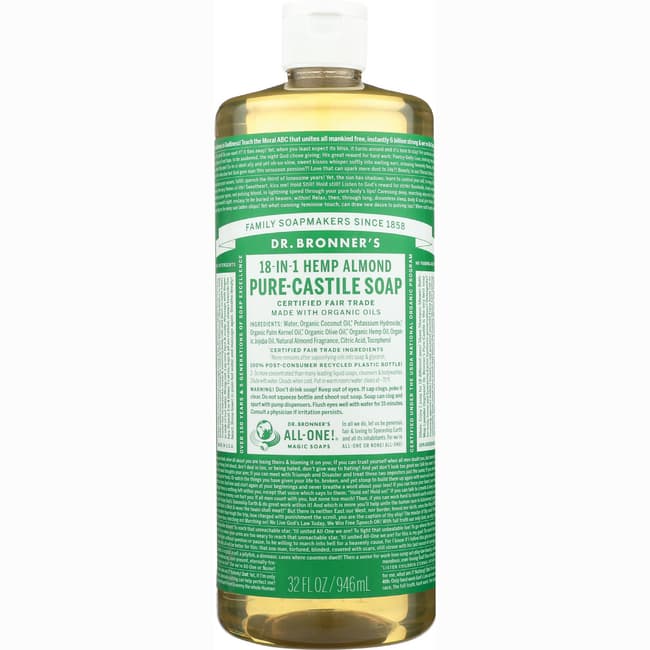Q. First year with my apricot and I spray with soapy
water to control aphids. Every day I check leaves but they never stop. Is this
good to spray to use?
A. Soap sprays are good to make an immediate kill of an
insect and don't expect them to reestablish themselves after you're finished.
The problem with aphids this time of year is that they will come back, usually
in just a few days, after soap sprays have been applied.
 |
| Aphid feeding on plum leaves can cause the leaves to curl over time, thus protecting them from sprays. |
 |
| I am not a big fan of soap and water sprays for insect control but if you decide to make your own please use a Castile type soap free of any scents or lotions. |
Use a decent soap
The good
thing about soap sprays is that they are very safe for humans, pets and other
large animals. The bad thing about soap sprays is they do not discriminate
between good bugs and bad bugs. If it's a bug and you spray it, it will die,
good or bad.
Soap and water is a killer
The
second negative about soap sprays is they have no residual. That means that
soap sprays leave nothing behind to kill bugs after the spraying is done. They
have no residual. You are the residual. Soap sprays rely on you, the
applicator, re-spraying when needed.
You must
be knowledgeable enough to spray the bad bugs but not the good bugs. It also
requires that you find most, or all of the bad bugs when you spray. If you
don't, they reestablish in a few days and you must spray them again, and
continue to spray them as long as you need to, over and over, until the problem
is gone.
More about aphids
Aphids
began infesting new growth, making more babies, as soon as the leaves popped
out. Females that survived and made it through the winter on landscape plants
had wings. They flew to the soft, succulent, sugary new growth and started
laying eggs as soon as it came out and as fast as they could. What a good
mother!
 |
| Ladybird beetle with aphid |
Mature female
aphids that make it through the winter have wings. They can fly short distances
to the new growth. These mother aphids never need a male aphid to produce their
young and they produce young very rapidly.
 |
| Aphids on developing pomegranate fruit. The fruit tissue is pretty hard for them to feed through but they will certainly like the much softer leaves and flower petals |
It just
so happens that many ants like the sugary residue that aphids leave behind when
they are feeding. Those ants which use sugar for raising their young absolutely
love aphids and move them to different locations on plants so that they can
"farm" them. Controlling ants colonies also helps to control aphid
populations.
Chemical controls
Moving
up the line of toxicity to aphids and comparing it to the toxicity toward
humans and the environment, next try some of the oils such as neem oil,
rosemary oil, mint etc. next moved to the so-called "organic" or
"natural" sprays like pyrethrins.
Pyrethrins
are made from a type of chrysanthemum. If you feel safe with pyrethrins, you
may choose to move to the synthetic pyrethrins which are everywhere in garden
stores but are not considered "natural" or organic. They leave behind
a residual and continue to kill insects after they have been sprayed.

No comments:
Post a Comment